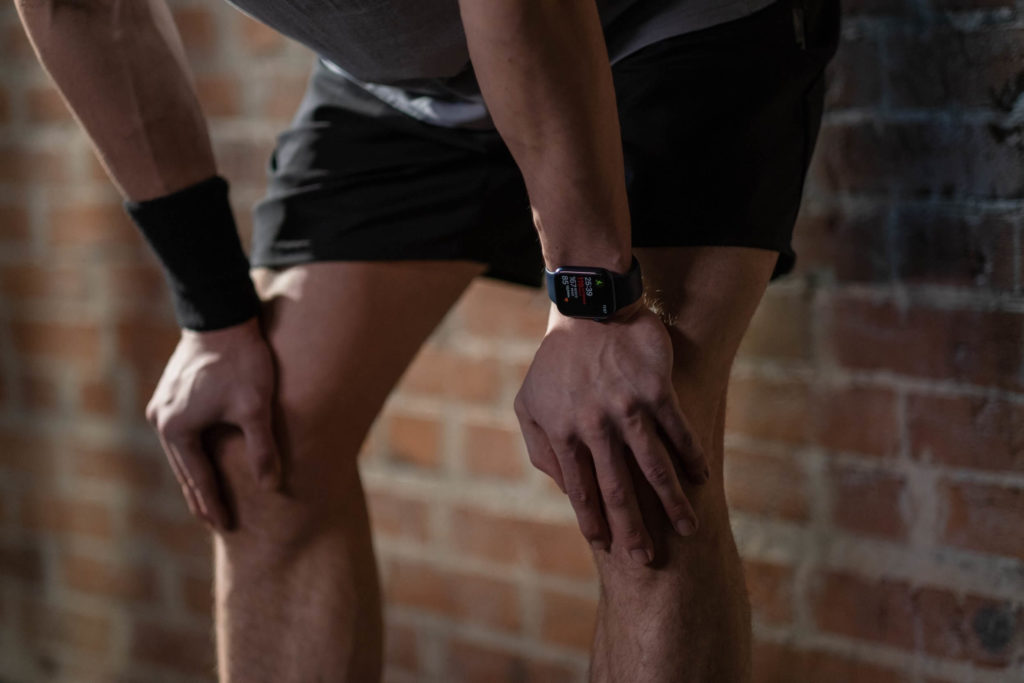Tracking steps is something everybody seems to be doing nowadays—on their phones, using a wearable device, you name it. It makes sense since keeping count of your steps makes a huge difference to your routine. It’s an extremely effective way to ensure you’re getting enough physical movement daily. Measurable benchmarks in fitness can help improve the overall quality of life.
You may work out regularly and never see the scale move, but when you track your steps, you realise that you’re only averaging 3,000 steps a day, which includes both exercise and non-exercise activities. This piece of information tells you that you need to move more and can allow you to set more focused goals for yourself.
You can incorporate more steps into your routine—taking the stairs instead of the elevator, doing outdoor activities like gardening, and walking to run errands on weekends are all great ways to ensure you get more steps in. Cardio exercises such as running, high knees, jumping jacks, etc., also boost your step count.
We’ve all read that sitting is as harmful as smoking. Sitting for over 8 hours a day has been linked to a 90% increased risk of type 2 diabetes. It’s important to break up prolonged sitting with movement breaks.
Step trackers can usually help in reminding you to get moving while allowing you to monitor how much you move. Trackers are a good way to meet your daily walking count. Setting and meeting daily goals is the perfect way to ensure you’re moving enough and monitoring your progress.
Trackers can also ensure personal and community accountability. Others can share their tips and triumphs on a community platform and make the whole endeavour more fun and supportive.
Trackers also help with incrementally increasing steps every day. Not moving much one day and walking 10,000 steps the next can be difficult, but it’s possible to add 100 steps with each passing day to your total count and create a walking routine that’s meaningful for your individual level of activity.

Highlights
- Step trackers can usually help in reminding you to get moving while allowing you to monitor how much you move,
- The way to break through a walking weight-loss plateau or hit a new step goal is to make changes to your routine, which can only be done by observing trends over a period of time,
- Walking to do errands instead of driving is a great way to get moving. This may take more time, but it adds movement to your day and allows you to be more conscious of your body and life in general.
Why Does Counting Your Daily Steps Matter?
A research team and investigators from three institutes from the National Institutes of Health, USA, studied the association between step count, risk of death and intensity of steps in a broad range of the U.S. population. They used data on physical activity from people aged 40 or older who wore an accelerometer—a device that measures step numbers and cadence (steps per minute) during their waking hours—for 7 days minimum between 2003–2006.
They then collected information on mortality in 2015, especially those from cancer and heart disease. They also tested whether step intensity, measured by the cadence, was associated with better health. There were 1165 deaths at the end of the study period, including 406 deaths from cardiovascular disease and 283 deaths from cancer.
The numbers showed that higher step counts were also associated with lower rates of death; these benefits were consistent across sex, age and race groups. The findings are also consistent with current recommendations that adults should move more and sit less through the day. Because this study is observational, it doesn’t prove that increased activity causes a reduced risk of death.
A higher step count may also include people who were in better health, to begin with, potentially influencing the results. Walking too little in a day may also cause exercise resistance, which means you don’t burn fat effectively, according to a recent study published in the journal Medicine and Science in Sports and Exercise.
The research determined that people who took 5,000 or fewer steps per day experienced exercise resistance, whereas people who walked more than 8,500 steps a day did not, which means that walking 8,500 steps a day is health-protective. Exercise resistance has a negative impact on triglyceride levels, which can negatively influence long-term heart health.
Researchers also studied data from 1,297 participants from clinical trials that randomly assigned half of them to track steps with pedometers over 12 weeks, while the other half didn’t track their steps at all. When they joined the trial, people took about 7,500 steps a day and got 90 minutes a week of moderate to vigorous workouts in at least 10-minute bouts. 3-4 years later, people who used pedometers were getting about 30 more minutes a week of moderate to vigorous physical activity, the study determined.
Pedometer users were also 44% less likely to experience a fracture and 66% less likely to have a serious cardiovascular event like a stroke or a heart attack. Tess Hariss, professor of primary care research at the St George’s University of London in the U.K., determined that increasing walking and maintaining it can reduce the risk of strokes, fractures and heart attacks over the next few years.
When they joined the pedometer trial, these people were in the age range of 45-75 and were typically overweight or obese. Most of them were non-smokers in good health without any history of diabetes, depression or cardiovascular disease. The people with pedometers appeared less prone to diabetes or depression by the end of the study; the difference between this group and the participants who didn’t track steps was too small to rule out the possibility that it was due to chance entirely.
Additionally, the trial participants did get help in setting realistic walking goals, received coaching from nurses and were encouraged to keep step diaries. Dr Mitesh Patel, director of the Penn Medicine Nudge Unit at the University of Pennsylvania, Philadelphia, says that tracking daily activity with a pedometer—wearable or smartphone—is an important part of any physical activity programme.
It also needs to be combined with behavioural change strategies via coaching, goal-setting and social interventions to make them more sustainable. The limitations of the study were that the researchers lacked four years of data pertaining to some participants and that most of the participants were white and female, making it possible that the results of such a study might be different in other populations.

What Are The Benefits of Tracking Your Steps?
There are numerous benefits of counting your steps:
- Enables you to beat a fitness plateau A fitness plateau can be a very frustrating experience for people who’re trying to lose weight. Walking and assessing your food choices help you beat the plateau. Tracking your steps can also help you make suitable adjustments. The way to break through a walking weight-loss plateau or hit a new step goal is to make changes to the routine, which can only be done by observing trends over a period of time. Looking at long-term trends is also more beneficial in comparison to looking at daily numbers since your step count may fluctuate based on external factors. A few days of fewer steps is not a reason to panic, but a few weeks of consistently lower step counts means that something’s changed for the worse. With enough data, you can look for trends like steps being higher on weekends or weekdays and even times of the day when you’re more or less active. It may also be the case that your step goals are too high; not everyone has the stamina to walk an hour every day, for example. When you’re far off from your ultimate goal, it’s better to set a smaller goal to hit first. Setting a goal you can’t hit is likely to hurt your walking motivation, so use your data to inform the best step goal for you.
- Holds you accountable: Staying on track with fitness goals is made much easier when there’s a sense of accountability. By simply tracking your steps, you may feel the need to move every day no matter what. Skipping your morning run, for example, will reflect in your daily step count, and seeing that decrease will allow you to acknowledge the decision you made. Additionally, tracking steps can allow you to support and receive support from friends, co-workers or family members. As mentioned, community support is always beneficial for weight loss and fitness improvements.
- Reminds you of your progress: There are going to be times in your fitness journey when you may judge yourself for not achieving the goals within the time frame you set for yourself. It’s also easy to forget past successes when you face a new challenge. Keeping a record of your daily steps helps you appreciate your progress and how far you’ve come. Reminders of your accomplishments, such as completing 13,000 steps on an afternoon hike with your friends, trigger positive feelings and a sense of confidence. Looking back on previous wins is always helpful, especially when you need a boost.
- Helps keep track of other associated health goals: Evidence suggests that walking positively affects general fitness and mood and positively affects weight management, BMI and waist circumference. It also helps maintain and improve sleep quality since being active during the day helps you sleep better at night. A decreased risk of hypertension reduces the risk of cardiovascular strokes and type 2 diabetes while also reducing stress. Walking was observed to improve the quality of life for depressed middle-aged women who reported feeling more sociable and energised after walking. Taking a walk during your lunch hour can significantly impact your mood and help reduce work-related stress. It can also help slow down mental decline while strengthening complex thought and decision-making.

How To Increase Your Step Count With Time?
You might start with a more conservative goal, but increasing and improving your daily step count over time is easy. Some easy ways to achieve that are:
- Depending on your step tracker: Regularly using your step tracker will enable you to stay accountable. Realising you’ve only done 1,000 steps in one day may give you the extra motivation you need to make up for it the next day,
- Walk between errands: Walking to do errands instead of driving is a great idea. This may take more time, but it adds movement to your day and allows you to be more conscious of your body and life in general,
- Walk for your commute: If it’s possible, try incorporating walking into your commute. If you’re driving to work or taking public transport, and if you’re limited by terrain or ability, you can attempt to devote part of the way to walking. If you’re taking public transport, walk to one bus/metro stop further than yours, or get off a few stops early to walk the rest of the way,
- Get a walking buddy: Having a buddy to stroll with keeps you accountable and moving and gives you company. Additionally, the social connection has profound mental and physical benefits as well,
- Add steps into the work day: If you’re sitting at your desk a lot, try moving around between calls or sending emails. You can even set hourly reminders on your phone that’ll remind you to move,
- Mini movements: Stand or pace while taking phone calls, or stretch your arms overhead and march in place,
- Arriving early at meetings? Do this: Don’t just sit and scroll through your phone if you arrive early for appointments. Instead, use the extra minutes to get a small walk in,
- Walk around stores: While grocery shopping or in the mall, walk around the space a little before you start shopping. You can also walk up and down every single aisle at the grocery store,
- Build the habit slowly: Build the habit in incremental steps. Adding 1,000 steps a day to your step count is more manageable than adding 5,000 steps. Increasing the amount of physical activity or steps over a long period of time reduces the risk of injury and helps create lasting behavioural change,
- Include both long and short walks: One long walk a day sounds ideal, but several short walks a day can help equally. Going on mini-walks is also a great way to boost your daily step count.
Conclusion
Walking is undoubtedly one of the best ways to maintain your fitness levels and health. However, incorporating a walk into a busy lifestyle is tough. This is where step trackers come into play. Tracking your steps helps you beat a potential fitness plateau, holds you accountable, reminds you of your progress and helps you keep track of other associated health goals.
There are a number of ways to improve your step count with time, such as walking between errands, walking for your commute, getting a walking buddy, adding steps into your work day, taking multiple trips while running errands, mini-movements, walking around stores, building the habit slowly and including both long and short walks, among other things.
Disclaimer: The contents of this article are for general information and educational purposes only. It neither provides any medical advice nor intends to substitute professional medical opinion on the treatment, diagnosis, prevention or alleviation of any disease, disorder or disability. Always consult with your doctor or qualified healthcare professional about your health condition and/or concerns and before undertaking a new health care regimen including making any dietary or lifestyle changes.
References







